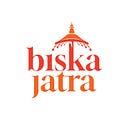Rathpuja in Bode: A Vibrant Procession
Khatpuja of Dyo Kha: Puja (खट: पूजा/ द्य: ख: पूजा) is a cultural tradition in Bode that holds deep significance in Biska Jatra. Khat, which means palanquin, and puja means paying pilgrimage to deities. In Nepalbhasa, it is known as Dyo Mhuikau (द्य: म्हुइकेगु), meaning worshippers take ways to pay homage to different deities. This tradition takes place annually on the Nepali New Year or Baishakh 1. It is also called as Rath Puja (रथपूजा)
A palanquin is a four-legged structure that resembles a temple. It is made of wood and has long bamboos tied together at each leg, making it easy to carry. Palanquin holds various deities, which are placed in the central sanctum of the structure.
On this day, early in the morning, people participate in Dyo Mhulau (द्य: म्हुलेगु) at Mahalaxmi Temple. People join this circumambulation, where they circumambulate the temple throughout the day, showing respect and faith in the deity and welcoming the new year differently.
In the mid-day, Khatpuja gets started. It is a public procession involving participants, adorned in traditional attire and ornaments, offering offers to the 32 palanquin deities scattered across Madhyapur. Madhyapur observes Biska Jatra with 32 palanquin processions in Thimi, Nagadesh, Bode, and Tigani. The route starts from Pancho Ganesh temple and passes through Mahalaxmi Temple, Lachhi Tole, Khaansi Tole, and Sanutar, making way to Neelbarahi Dyo Chhen at Tigani. Further moving it takes way to Thimi starting from Chapacho, Hattimahankal, Bhulankhel, Shiwa Tole, Wamune, Balkumari, Sunga Tole, Layaku, Digu Tole, Siddhikali temple and Chapacho. Afterward, it moves to Nagadesh at Siddhiganesh Temple and concludes with offerings to Kalika mai at Lachhitole, Bode, at the end.
During the Khatpuja, the surroundings filled with enthusiasm as participants engage in the procession, accompanied by music and dance. The rhythmic beats of dhimey baja and nyakhin baja set the tone, with participants and musicians blending along the route. People bring offerings according to their means and preferences, presenting food and drinks to each deity and creating a festive ambiance throughout the celebration. Khatpuja is a community heritage with social sharing and cultural significance for the organizers and participants.
There is no written evidence confirming the start of the procession. Still, during the Rana regime in the early 19th century (Nepal Samvat 1062), the government recognized the importance of continuing such festivals through the presence of Pama and Dware. Local taxation collected 33 paisa from weddings and other events throughout the year, which helped to organize the Khatpuja annually. This information is based on folklore passed down by previous generations. For some reason, the event stopped for a few years, but local businesspeople later restarted it in 2032 BS. In further years, it was supported by many families, local guthis, and tole-specific initiations.
